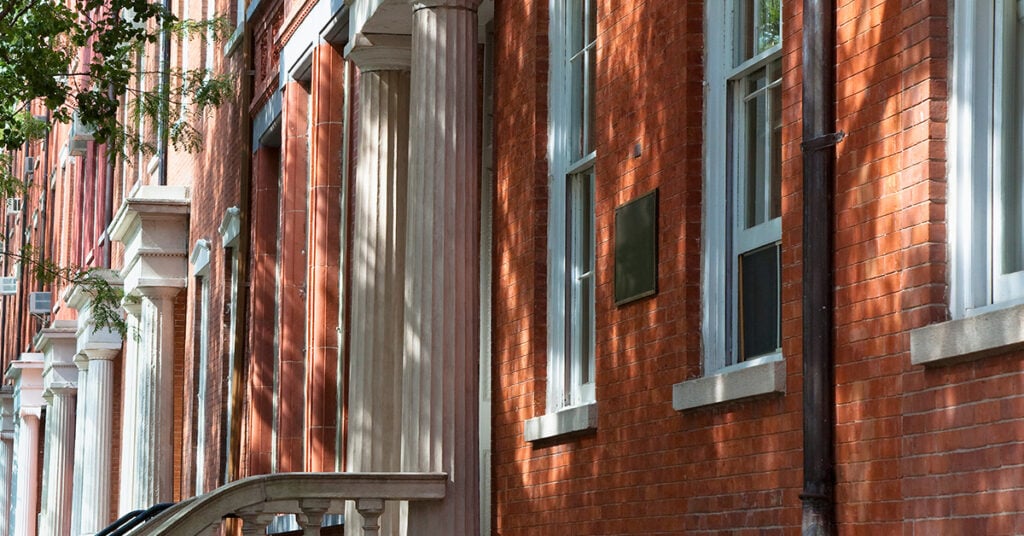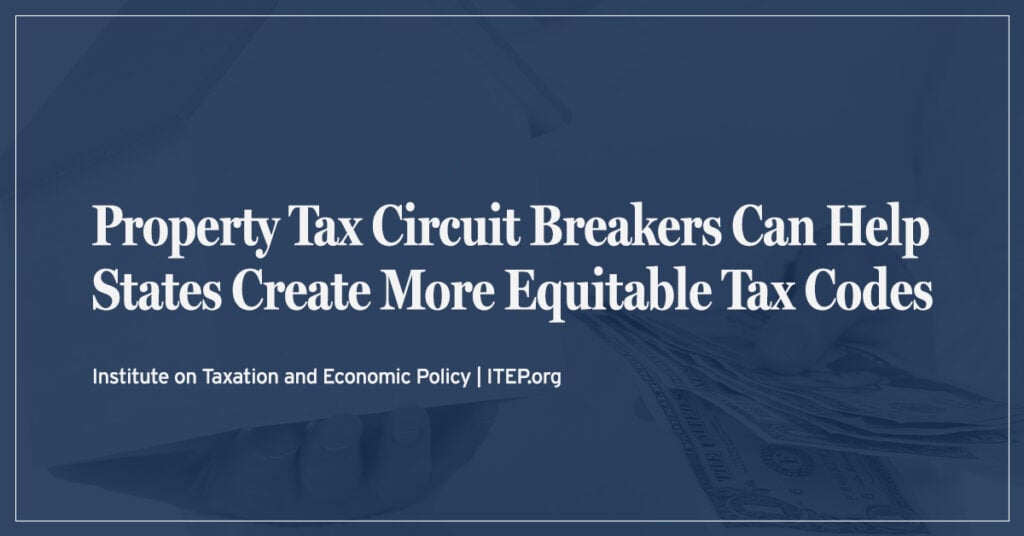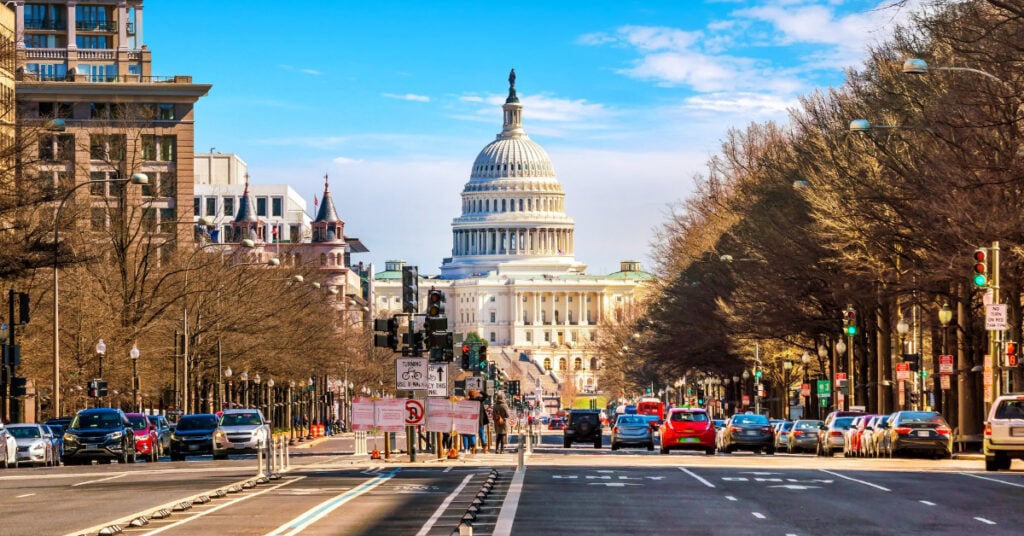Many cities, counties, and townships across the country are in a difficult, or at least unstable, budgetary position. Localities are responding to these financial pressures in a variety of ways with some charging ahead with enacting innovative reforms like short-term rental and vacancy taxes and others setting up local tax commissions to study the problem. While it is difficult to distill overarching themes, one thing is clear: figuring out how to sustainably and adequately fund local government is a top priority across the nation.
Increasing Budgetary Pressures
The fallout from the pandemic continues to hurt local revenues. Commercial real estate prices are still down as much as 80 percent relative to a decade ago in some cities, resulting in significantly lower property tax revenues. For example:
- New York City could see budget shortfalls of over $1 billion by 2027 if office values settle at 40 percent below their pre-pandemic peaks.
- Boston could face a cumulative shortfall of over $1 billion in the next five years due to vacant offices; Boston considered but ultimately rejected a bill that would have temporarily adjusted its property tax formula to have commercial owners pay a larger share.
- Municipalities in Wisconsin are facing budgetary challenges despite the legislature updating the state’s shared revenue formula last year.
Nationwide, the Coronavirus State and Local Fiscal Recovery Fund provided $350 billion for states, municipalities, counties, tribes, and territories, staving off worst-case financial scenarios. But these dollars need to be obligated by the end of 2024 and spent by the end of 2026.
Localities are also dealing with higher expenses. Higher interest rates on debt service payments, pension costs, and construction costs, among other factors, have made it harder to balance local budgets. The consequences are dire as cities across the nation are considering eliminating vacant positions, cutting funding for libraries and parks, forgoing infrastructure improvements, and even cutting waste sanitation operations.
Despite claims of an “urban doom loop”, economic fragility is not limited to larger cities. For instance, the Secure Rural Schools program, which distributes federal funding to counties with large amounts of untaxable public land, is set to expire unless Congress votes to extend the program. More than 700 counties nationwide use the funding for schools, roads, and public health services.
Impact of State Decisions on Local Revenues
In some cases, state legislative decisions exacerbate problems. For example, after Arizona fully implemented a 2.5 percent flat income tax in 2023, local governments lost approximately $225 million in one year. Researchers estimate that cities and towns will lose almost a third of their revenue-sharing dollars and that small, rural communities will be disproportionately impacted. Legislators also enacted a sweeping school voucher program that tanked the state budget; last fiscal year, the cost of the vouchers skyrocketed from just under $65 million to roughly $332 million. Altogether, Arizona went from having a budget surplus of $1.8 billion to having a $400 million shortfall. Fifteen percent of state income tax revenues flow to cities and towns in Arizona so these policies badly harm local governments. Additionally, Phoenix will lose tens of millions of dollars in sales tax revenue after state lawmakers banned cities from taxing residential rents; this makes sense from an equity perspective for renters but adds to Phoenix’s fiscal shortfall.
Arizona is an extreme example, but state policies very often impact localities; nationwide, transfers from states contribute approximately 32 percent of local revenue. Elsewhere:
- A failed proposal in Massachusetts would have allowed local authorities to impose an additional 0.5 to 2 percent transfer fee on high-value property sales. In 2021, a 2 percent fee on property sales above $2 million in Boston could have generated $100 million for affordable housing.
- In Wisconsin, Madison’s Common Council urged state lawmakers to expand local tax authority so the city could impose its own local sales tax. State lawmakers permitted Milwaukee to impose a local sales tax, the only local sales tax in the state, since the city was facing bankruptcy. Gov. Evers has twice proposed allowing larger cities to levy a sales tax with voter approval, but the measures have been blocked by the legislature.
- In New York, Hochul reversed course on a long-awaited congestion pricing program. The plan would have raised $1 billion annually for critical transit upgrades; instead, the cancellation wasted $700 million in prep work and the Metropolitan Transportation Authority (MTA) may need to end express bus trips to close its budget gap. The governor unsuccessfully proposed an business tax increase instead that would have primarily impacted New York City businesses and residents rather than commuters.
- On a more positive note, Maine repealed limitations on municipal property tax collection that have been in place for nearly 20 years. Prior to repeal, the state undermined local decision-making by limiting government spending growth essentially to the rate of inflation, and tax growth to a slightly higher limit.
Tackling Housing Affordability and Supply Challenges
Local mansion taxes are a worthy option for raising revenue while simultaneously advancing racial and economic equity, but not all localities are willing or legally able to pursue them. Instead, as cities across the nation face housing shortages and increased homelessness, some local leaders are turning to regressive sales taxes.
- In Denver, the City Council may send a measure to voters in November that would impose a 0.5 percent sales and use tax increase to expand affordable housing.
- Other jurisdictions like King County, Washington, and Miami-Dade County, Florida already have sales tax funded housing initiatives in place. The Miami-Dade County Homeless Trust initially exempted restaurants in Miami Beach, Surfside, and Bal Harbour from the 1 percent food and beverage tax but lawmakers may repeal the exemptions.
Other cities are taking a more innovative approach towards increasing housing supply and maintaining affordability.
For instance, Honolulu created a new property tax category for short-term rentals in hopes of increasing housing stock for local residents. Councilmembers extensively debated the rate since setting the rate too high could incentivize short-term rental owners to operate under the table; ultimately, the City Council approved a rate between that of residences and hotels.
Baltimore also faces an affordable housing shortage exacerbated by the city’s numerous vacant properties. After several years of debating this issue, state lawmakers approved legislation allowing localities to impose higher taxes on vacant buildings and lots. The higher rate will deter speculation, incentivize property owners to revitalize lots into usable space, and make it easier for jurisdictions to acquire abandoned property. Baltimore also avoided a dangerous proposal that would have drastically cut and capped the city’s property tax rate after the Board of Elections rejected the petition since only elected officials can set the rate.
Similarly, Atlanta just approved a new “blight tax” that could increase tax bills of blighted properties by up to 25 times the current city tax rate; the bill does not apply to occupied properties (to prevent displacement) and qualifies property owners rehabilitating their properties for a reduced tax rate.
Many local leaders are understandably concerned about rising property taxes. For those seeking solutions, property tax circuit breaker programs are far more effective, equitable, and targeted than across-the-board tax cuts. For example, Cook County, Illinois is considering using property tax late fees to fund a means-tested rebate for low-income homeowners.
Raising Dedicated Revenue for Child Care
Many voters seem more amenable to tax increases that are dedicated to addressing specific needs like child care rather than unrestricted funds. Pandemic-era subsidies that supported child care providers expired last fall, worsening availability and affordability challenges and increasing pressure on states and localities to fill the gap.
- Last year, Whatcom County, Washington, and Anchorage, Alaska, raised property taxes and marijuana taxes, respectively, for child care.
- This year, Travis County, Texas residents could vote on a November ballot referendum to implement a 2.5 cent increase per $100 of a home’s value to raise $77 million for early childhood education.
- Earlier this year, the California Supreme Court upheld an Alameda County sales tax increase for child care four years after voters approved the measure.
- In Missouri, the Louis Public Schools Board opposed a proposed sales tax increase for early childhood education because state law restricts the city’s ability to subsidize child care tuition, workers’ salaries or additional seats; consequently, the Board argued that the revenue could not be used to directly support the city’s for-profit or in-home day cares.
The Progressivity vs. Adequacy Debate
Due to legal restrictions, many local jurisdictions have few options to meaningfully raise revenue besides regressive sales taxes or fines and fees. At the same time, households with few resources have little choice but to spend a larger share of their incomes on items subject to sales taxes.
In Minnesota, a record number of local lawmakers requested state approval for sales tax increases last year. House Taxes Committee Chair Aisha Gomez argued that sales taxes hurt low-income families and primarily favor wealthier cities with robust retail sales, and ultimately won a two-year moratorium on new proposals. Gomez pitched a reform proposal that would require cities and counties to contribute 15 percent of annual local sales tax revenues to an account that would be distributed among political subdivisions based on need. The bill did not advance, but this issue is likely to come up again next year.
There are a number of sales tax questions on the November ballot across the nation, including in San Diego, California towards their general fund, San Diego County, California for transportation infrastructure, Transylvania County, North Carolina for infrastructure and to avoid property tax increases, Snohomish County, Washington for public safety, and Spokane, Washington for fire, police, and extreme weather planning.
Rethinking Tax Policy Through Commissions
In response to budget pressures, jurisdictions across the nation have set up tax commissions and task forces to think through existing policies and recommendations for the future.
- For example, after Salem, Oregon voters rejected an employer-paid payroll tax last November, city officials considered closing fire stations, shutting a library branch, cutting police funding to investigate drug-trafficking cases, and reducing homelessness services. A Revenue Task Force put forth several recommendations to fill the gap including business license fees, franchise fee increases, local option property tax levies, and personal income taxes.
- In Cincinnati, a Futures Commission of local business and labor leaders created a package of 36 recommendations to address their deficit. They include establishing a 10-year 0.05 percent income tax for police and fire operations, a monthly waste collection fee, and a 0.1 percent earnings tax increase for specific economic development purposes. The Cincinnati City Council has until August 7 to put the income tax increases on the November ballot.
- St. Louis Mayor Tishaura Jones established a new task force to consider options for replacing the earnings tax that currently makes up a third of the city’s general revenue.
Other cities that are taking a close look at their tax systems include Pittsburgh, Philadelphia, Scottsdale, and Washington, D.C. We anticipate more localities will reassess their current tax systems over time to ensure a resilient tax base and high-quality public services.





